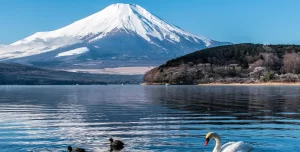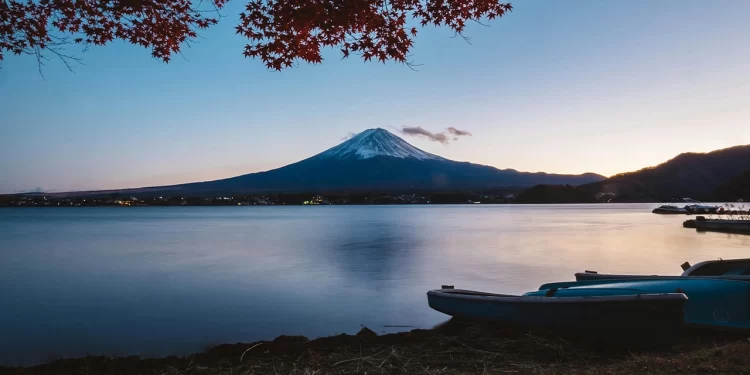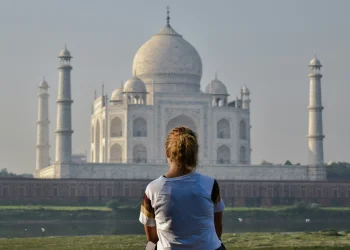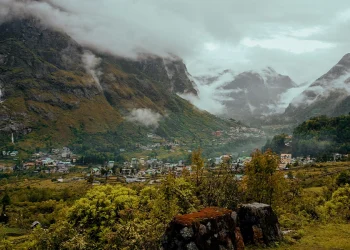As the summer hiking season begins, Japan has introduced new measures to control crowds on Mount Fuji, addressing concerns of overtourism and safety. Starting this Monday, hikers on the popular Yoshida Trail will need to make online reservations and pay an entry fee of 2,000 yen ($13) before attempting the climb.
This initiative aims to limit the number of hikers to 4,000 per day, ensuring a safer and more sustainable experience for all. Additionally, hikers are encouraged to make optional donations to support the preservation of the highest peak of Japan. “I really like the idea because if you respect the mountain, you have to limit the people,” said Chetna Joshi, a hiker from India, expressing her support for the new regulations at the trail’s Fifth Station.
Also Read: Tourist Rentals To Be Phased Out In Barcelona By 2028
Despite windy and drizzly weather on the opening day, Joshi remained positive about her experience, highlighting the importance of respecting nature’s signals. “I love mountains. I think it is not giving me permission this time, that’s OK. I accept it,” she stated.
Mount Fuji, renowned for its majestic beauty and cultural significance, attracts over 220,000 visitors each climbing season from July to September. Many climbers undertake the arduous night trek to witness the sunrise from the 3,776-meter (12,388-foot) summit. However, the surge in post-pandemic tourism has heightened safety and environmental concerns.
Governor Kotaro Nagasaki of Yamanashi Prefecture said that the new protocols prioritize the protection of lives. The Yoshida Trail, the preferred route for 60% of climbers due to its convenient access from Tokyo, will be closely monitored to prevent overcrowding and ensure climbers’ safety.

The recent discovery of four bodies near the summit serves as a sobering reminder of the dangers posed by insufficient preparation and poor weather conditions. Reports have frequently surfaced in Japanese media about tourists attempting the climb without proper mountaineering gear.
Geoffrey Kula, an experienced climber from the United States, shared his meticulous preparation for the hike. “Having looked at the forecast, being ready to swap out multiple outfits if clothes get wet and things like that. Yeah, it just seems like another crazy adventure,” he said.
Also Read: Menorca’s Binibeca Vell Contemplates Ban Amid Overtourism Crisis
The rise in tourism, while beneficial for Japan’s economy, has also brought challenges. In March, April, and May, monthly visitors to Japan surpassed three million, reinforcing the country’s goal of attracting 60 million foreign tourists. However, the surge has not been universally welcomed. Local communities near Mount Fuji and in Kyoto have voiced concerns over littering, trespassing, and disrespectful behavior by tourists.
In an attempt to preserve the natural and cultural heritage, a town near Mount Fuji recently erected a large barrier at a popular viewing spot to deter photo-seeking tourists. This approach mirrors efforts in other global tourist destinations, like Venice, which has implemented entry fees for day visitors.
As Mount Fuji’s climbing season unfolds, the new approaches will be closely watched to gauge their effectiveness in balancing tourism and conservation, ensuring that the iconic volcano remains a cherished destination for generations to come.

Founded in 2016, The Traveller Trails is a print and digital magazine and a trusted source for current news, trends, analysis, opinions, interesting blogs, videos and exclusive interviews from every corner of the world.












